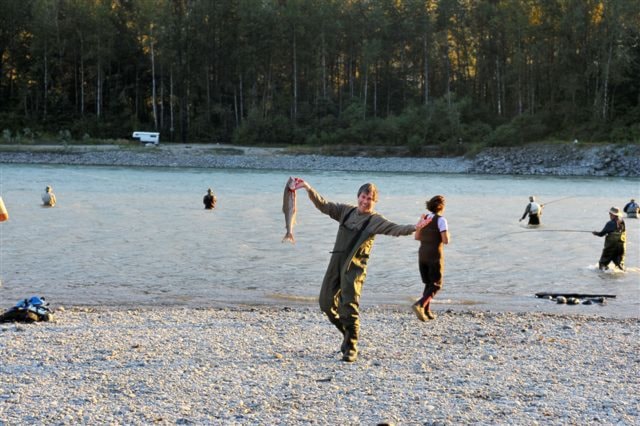An improving run of sockeye salmon returning to the Fraser River has prompted fishery managers to reopen fishing for other salmon species that had been closed to guard against any accidental bycatch of sockeye.
Pacific Salmon Commission officials now estimate around four million sockeye are on track to return due to more fish arriving later than anticipated.
That's still below a pre-season forecast of 4.7 million but it's much better than a few weeks ago when salmon watchers feared just two million would return.
Recreational angling for chinook, pink and chum salmon opens Friday morning below Mission and for pink and chum above Mission starting Saturday morning.
First Nations also have the go-ahead to fish for chinook, chum and pink on the lower Fraser for food, social and ceremonial purposes.
A limited commercial fishery for pinks is also expected.
Water temperatures have cooled somewhat from dangerously high levels earlier in the summer but fishery managers still expect 70 per cent of returning sockeye will die on their journey upriver to the spawning grounds.
As a result, all of the fisheries are directed to release any sockeye that are caught.
"We are getting early reports of fish arriving at the spawning grounds in good condition," said Jeff Grout, DFO regional resource manager.
Sockeye run on a four-year cycle, so the fish now migrating are the offspring of the disastrous 2009 run, when just 1.6 million sockeye returned, prompting the appointment of the Cohen Inquiry.
There had been high hopes that this would be the year that stock begins to rebuild.
While DFO officials say there are now signs that will happen, they say the return and the river conditions are still far from what they had hoped.
The pink run has also been upgraded, from 14 million to an estimated 16 million fish, and that number is expected to climb further.
Fishery officers have been sweeping the river for sockeye poachers.
So far 10 boats and 66 nets have been seized with 29 investigations underway that are expected to lead to charges.
Tom Hlavac, from DFO's conservation and protection branch, said the majority of suspected poachers caught are First Nations, but added others are non-aboriginal.
– Jeff Nagel
